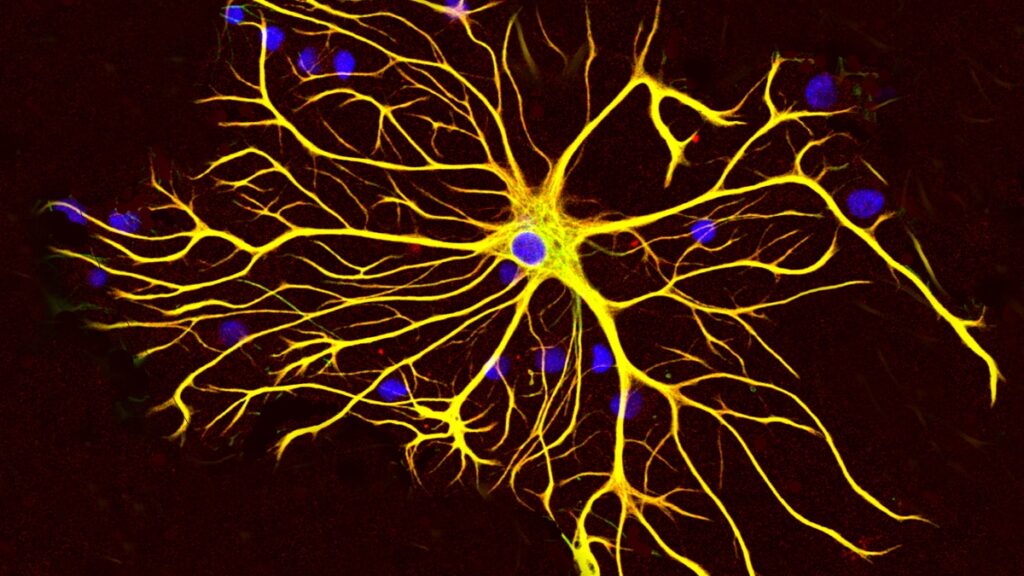Among neurons and their supporting structures, a multidisciplinary team of researchers discovered a brand-new type of brain cell.
Surprisingly, the newly discovered cell type possesses both traits, enabling it to participate actively in neurological processes while also supporting the surrounding nerve tissues.
Astrocytes are many cells in the brain that act as “glue” for neural synapses. Neuroscientists had long held the belief that these cells were completely inert and only served to safeguard neurons.
Evidence that astrocytes may contribute to neuronal “firing” by secreting glutamate, the primary neurotransmitter in the brain, transformed the science.

The role of astrocytes in a functioning, healthy brain is still being researched, despite laboratory research indicating they can release and absorb glutamate.
A radical hybrid cell has been discovered in the brains of mice by researchers from numerous universities in the United Kingdom and Europe while further investigating that theory.
According to pharmacologist Andrea Volterra of the University of Lausanne in Switzerland (UCIL), “we now have a new kind of cell at our disposal in between neurons and astrocytes.”
The finding offers tremendous research opportunities.
In the hippocampus of the brain, Volterra and his associates discovered nine different astrocyte clusters using single-cell RNA-sequencing.
Seventeen stood out as a cluster. It had all the essential molecular equipment to enclose glutamate for release and was restricted to extremely specific regions of the hippocampus in the brain.
These specialized cells release glutamate at specific regions that are evocative of synapses, the location where two neurons typically communicate by releasing glutamate, the researchers discovered using a form of glutamate imaging on living mice.
Neuroscientist Roberta de Ceglia from UNIL notes that these cells “are cells that modulate neuronal activity, control the level of communication and excitation of the neurons.”
Mice’s memory was hampered when the research team destroyed these astrocyte-like cells.
According to Volterra, his group is already preparing experiments to examine the function of the hybrid cells in memory-impairing brain conditions like Alzheimer’s.
According to the study’s authors, “by identifying this atypical subpopulation of specialized astrocytes in the adult brain, we provide insights into the complex roles of astrocytes in central nervous system (CNS) physiology and diseases and identify a potential therapeutic target.”
The first of their kind, the unique cells are currently known as glutamatergic astrocytes.
The study was published in Nature.


